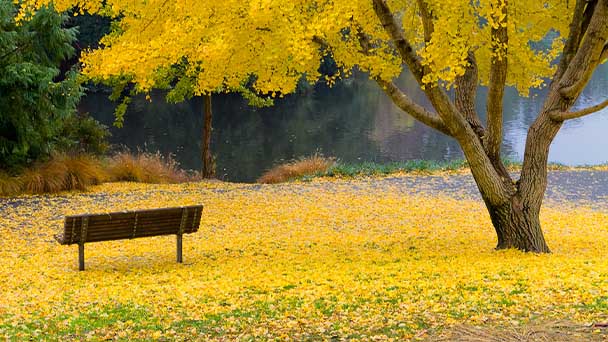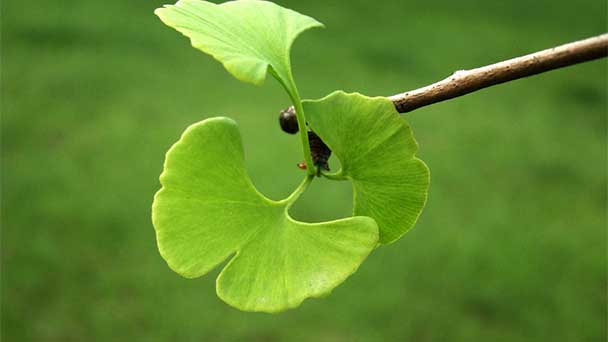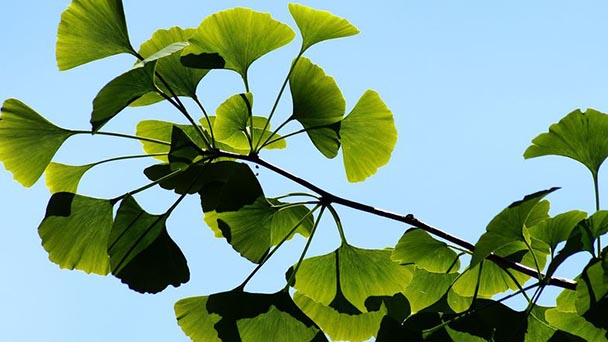Ginkgo Profile
Written by Joy
Sep 27 2020

Ginkgo is a deciduous tree of the Ginkgo family. Ginkgo appeared hundreds of millions of years ago, and is one of the oldest surviving gymnospermous plants left over after the quaternary glacial movement. The existing living ginkgo biloba plants are rare and scattered, the old trees of one hundred years old are rare, and all the other plants in the same class with it are extinct, so ginkgo gains the reputation of living fossil. Varieties are: yellow ginkgo biloba, tower ginkgo Biloba, split Ginkgo biloba, pendant ginkgo biloba, variegated ginkgo biloba, 26 species in total.


Ginkgo morphological characteristics
Ginkgo is a large deciduous tree whose diameter could build up to 4 m. The bark of young trees is nearly smooth and light gray. The bark of large trees is grayish brown with irregular longitudinal cracks and rough. There are long branchlets, slow growing and short spaced branchlets.Young and mature crowns conical, broad ovate in old; Branches sub whorled, obliquely extended; Annual long branches pale brown yellow, gray above biennial, with fine longitudinal cracks; The short branch is densely foliaceous mark, black gray, on short branch also can grow long branch; Winter buds are always yellowish brown, often ovoid, apex obtuse.
Ginkgo growth habit and growing environment and distribution
Ginkgo has a long life and there are over 3000 years old trees in China. It is suitable for growing in the subtropical monsoon region with superior hydrothermal conditions. The soil is yellow soil or yellow brown soil. The initial growth is slow and the tillering ability is strong. Female plants usually start to bear fruit after 20 years or so, and 500-year-old trees can still bear fruit normally. Generally speaking, germinating leaves from late March to early April, flowering from early April to mid-April, seed ripening from late September to early October, and deciduous leaves from late October to November.Ginkgo is widely distributed in China, Japan, North Korea, South Korea, Canada, New Zealand, Australia, the United States, France, Russia and other countries and regions. Ginkgo has a wide range of natural geographical distribution. In terms of horizontal natural distribution, ginkgo biloba near the north latitude of 30 has the longest east-west distribution distance. With the increase or decrease of this latitude, the east-west distribution distance of Ginkgo is gradually shortened. The higher the latitude, the more the distribution of Ginkgo tends to the eastern coast, and the lower the latitude, the more the distribution of Ginkgo biloba tends to the plateau and mountainous areas in the southwest.
Ginkgo efficacy and role
Ginkgo tree is tall and straight, leaf like fan, leaf shaped quaint with a long life. Crown shade shape, with cooling effect. No pests and diseases, no pollution of the environment, the tree trunk clean, is a famous pollution-free tree species, conducive to the propagation of ginkgo and add to the landscape. Strong adaptability, ginkgo climate and soil requirements are very broad, smoke resistance, fire resistance, anti toxic gas. Ginkgo tree body is tall, straight trunk, graceful posture. Spring and summer green, golden in late autumn, is the ideal landscaping, road tree species. It can be used for landscaping, road, highway, field forest net, windbreak forest belt of the ideal cultivation tree species. It is listed as four longevity ornamental tree species in China.Ginkgo cultivation
For ginkgo planting, a nest shall be dug according to the designed plant spacing with a specific meter. After the nest is dug, the topsoil shall be backfilled and the fermented fertilizer containing superphosphate shall be applied. When planting, the root system of the seedlings will be naturally stretched, aligned with the left and right seedlings, and then fill the soil while steady. The depth of planting should be 2 to 3cm on the original soil of the seedlings. Do not bury the seedlings too deep. In order to improve the survival rate, the roots should be watered in time after planting.Latest Updated
- Benefits of Bugleweed - 7 Science-backed Health Benefits
- Bugleweed Dangers & Side Effects - Is It Poisonous?
- How to Plant Evergreen Trees - What You Should Know
- When to Plant Evergreens - Grow Guide for Evergreen Trees
- 12 Wonderful Evergreen Shrubs for Your Garden
- 12 Popular Evergreen Plants with Pictures for Beginners
- When And How To Prune A Lilac Bush Like a Pro
- How to Grow & Care for Lilac Vine (Hardenbergia Violacea)
- Japanese Lilac Tree (Syringa Reticulata) Care & Propagation Guide
- Shumard Oak Pros and Cons - What to Know
Popular Articles
- Winter maintenance of Antirrhinum Majus
- How to Grow Terminalia Mantaly Tree
- How to Grow and Care for Crossostephium Chinense
- How to grow Antirrhinum Majus in spring
- Peristeria Elata (Dove Orchid) Profile: Info & Care Guide
- Underwatered Snake Plant (Sansevieria Trifasciata) - Signs And How To Fix
- How to Care for Brazilian Jasmine Plant (Mandevilla Sanderi)
- How to Grow & Care for Graptopetalum Purple Delight in Summer
- Rosa Chinensis (China Rose): Plant Growing & Care Tips
- How to Care for Baby Sun Rose (Aptenia Cordifolia)